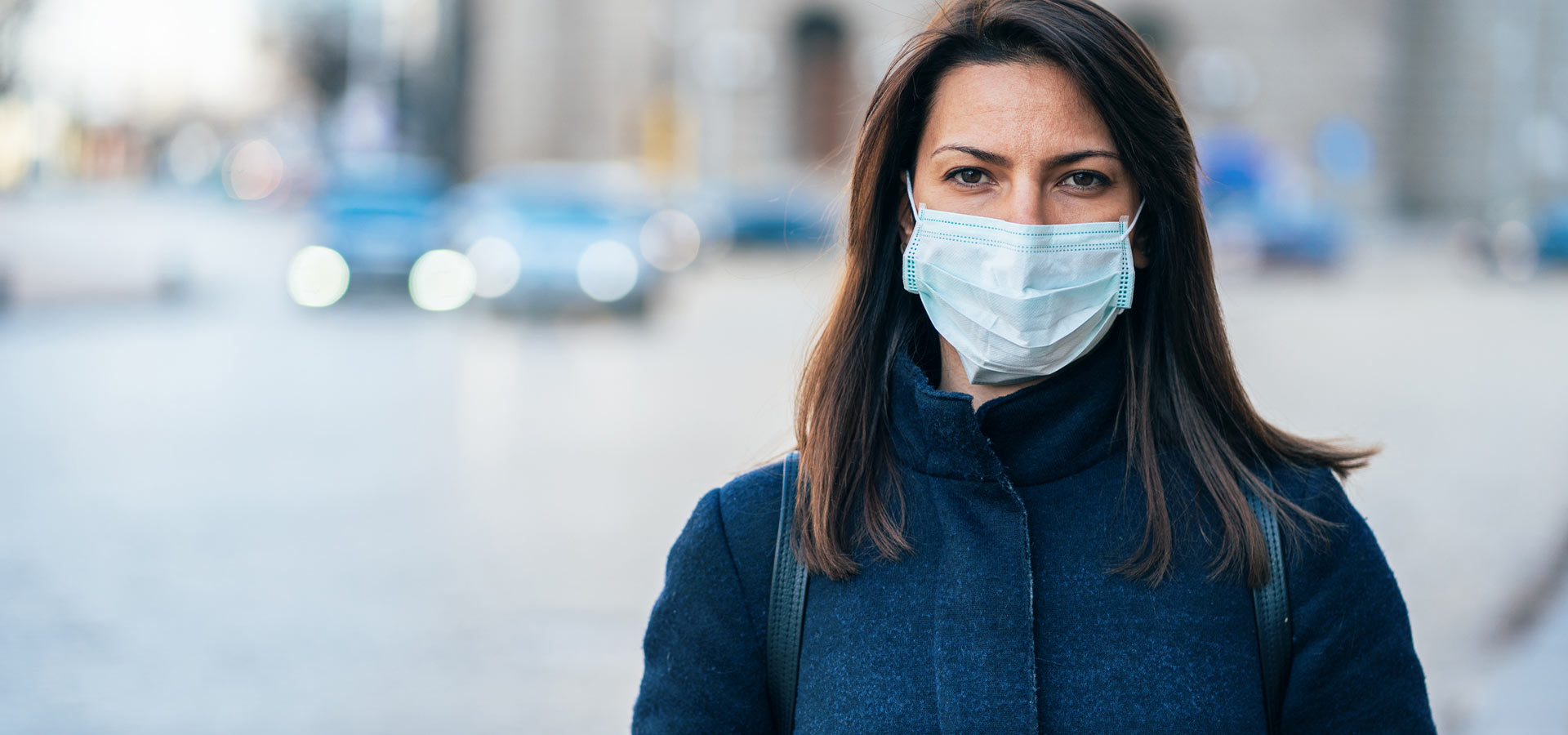People are wearing masks to protect themselves and others from contracting COVID-19. While it can be a little uncomfortable and inconvenient to keep a mask on in public spaces, the importance of doing so cannot be overstated. So how, and why, do masks work?
“When a person has COVID-19, the virus lives at high amounts in the nose, back of throat and airways,” said Amy Ray, MD, MPH, director of infection prevention and employee health at MetroHealth. “Masks serve as a physical barrier to prevent the transmission of mucus and tiny respiratory droplets from one person to the next.”
Most of the data scientists have about the benefits of wearing a mask are from the health care setting. Surgical masks can reduce viral transmission by 70 to 80 percent, while N95 masks can reduce transmission by more than 90 percent. Evidence supporting cloth masks for use by the general public is mounting.
Protection for You, Protection for Me
Wearing a mask in public not only helps others from becoming sick, it may protect you as well. “If you’re around another person who sneezes or coughs, it’s better that the droplets released end up landing on your mask than directly on your nose, mouth or face,” said Dr. Ray. Masks are also important because up to 40 percent of people with COVID-19 don’t show any symptoms but can still exhale contagious respiratory droplets.
If you wear a mask and are exposed to someone who has COVID-19, you can still become infected. However, researchers think you may not become as ill because your mask cuts down on the amount of virus that you’re exposed to.
Dr. Ray noted that mask wearing should be combined with social distancing, hand washing and not touching your face. “And being outside does not negate the need for a mask. You should put one on if you come within six feet of other people to protect yourself and others,” she said. Dr. Ray also noted that wearing a mask is not a permission slip to get close to others. Social distancing is the single most effective way to avoid the virus.
Here are a few key points to keep in mind when wearing a fabric mask, according to the World Health Organization and The Centers for Disease Control and Prevention:
- Masks should be worn over the nose, mouth and chin.
- Wash your hands before putting on the mask, as well as before and after taking it off.
- Adjust the mask to your face so there are no gaps on the sides.
- Avoid touching the mask while wearing it.
- Touch only the straps behind your head or ears when removing the mask.
- If you need to reuse the mask throughout the day, store it in a plastic bag.
- Wash your mask with soap and hot water at least once a day.
- Masks should be 2-3 layers of cloth.












